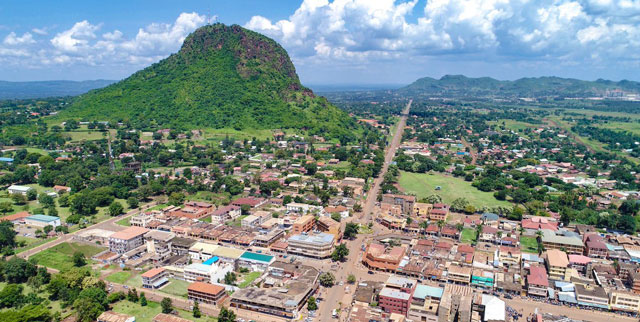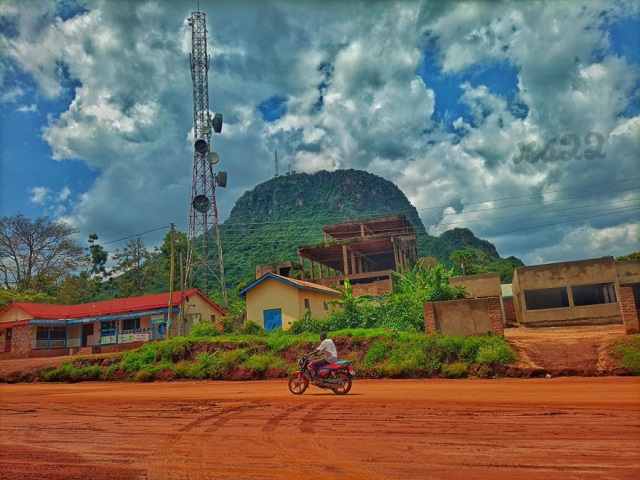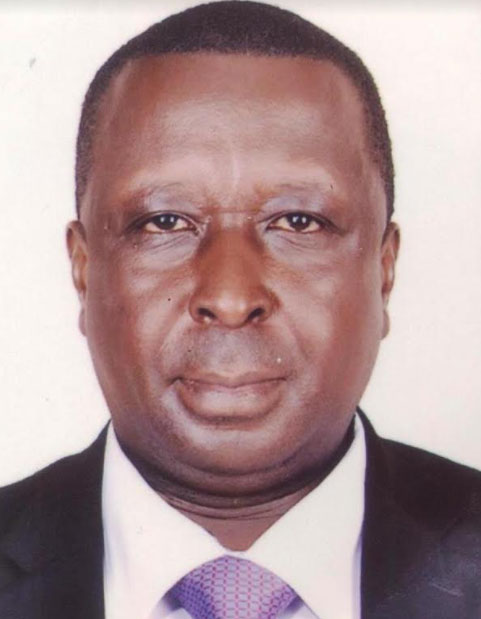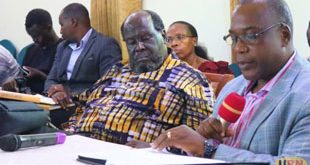
In his article, Oboth was insensitive to the feelings of our other ethnic groups such as the Banyole, Bagwere, Basamia, Iteso and Bagisu who consider Tororo equally their ancestral town.
COMMENT | Alfred Geresom Musamali | In his article entitled “Tororo must start thinking big,” published in The Independent Magazine website recently, Jackson Oboth gives us some hope about the possibility of reviving the town – headquarters of former Bukedi district.
For instance, he narrates how the Senior Quarters were “…a model residential area in Tororo, where the town’s elite and civil servants brought up their families”. He says, “We all know the prestige and honor once associated with living or owning property in the Senior Quarters in the 70s and 80s”.
The accompanying photo is of Osukuru Road just below the northern slopes of “the Rock”, that I remember running through regularly from the Nagongera Road round-about, past the Uganda Commercial Bank (UCB, now StanBic), the Post Office (now split into Posta Uganda, Post Bank Uganda and limping Uganda Telecomms Ltd), Rock High School (RHS), the District Administration (DA) Offices and the Bukedi Diocese Cathedral – but not necessarily in this same order.
Just around the cathedral, there are some branchings off Osukuru Road to the left, one into the railway station, another into the Police Barracks, one more towards St. Peter’s College, Tororo and onwards to then Bukedi’s Kwapa sub-county and the then Bugisu’s Butiru sub-county (now in Namisindwa district) while yet another heads to the Prisons’ Farm at Morukatipe.
That road pictured speaking volumes curves sharply right at one point, goes through the Senior Quarters and reaches a crest before slopping down towards the Rock (now Classic) Hotel. There is a T-Junction at the hotel where the Osukuru joins the direct Kampala highway to Malaba and Mombasa (Kenya). On the right side of that junction as you turn east towards Malaba is Tororo Girls’ School (TGS) then Manjasi High School (MHS) and a disused factory for the prefabricated walls with which some of the buildings in MHS were constructed under the First International Development Association (IDA1) Project in 1966.
Opposite MHS is the former Tororo District Farm Institute (DFI, whatever its current names or acronyms!) where peasants from many parts of the country used to come for short courses in modern agriculture.

So, Oboth’s article incited into me a nostalgia of lingering through the beautiful quiet Senior Quarters with well-manicured live plant fences (not ugly perimeter walls!) as I plodded Osukuru Road on weekends to and fro MHS where I did my lower secondary education between 1975 and 1978.
However, I feel the Oboth did not undertake enough research. To begin with, if he had done the research he would have found out that the Senior Quarters in those days accommodated five main types of residents.
The first type were senior East African Community (EAC) public servants posted to Tororo, such as the in charges of the East African Customs and Excise Department (EAC&ED), Station Masters for the East African Railways and Harbours Corporation (EAR&HC), the Post Masters for the East African Posts and Telecommunications (EAP&TC ie the Post Office) Ltd and the leadership of the East African Trypanosomiasis Research Organisation (EATRO).
The second category were Uganda Government public servants posted to the district, among them the District Commissioners (DCs), the District Education Officers (DEOs), the District Agricultural Officers (DAOs) as well as the Commandants of the Air and Sea Borne Battalion (ASBB) at Rubongi along Nagongera Road and the Prisons Superintendents at Morukatipe.
The third category were managers of the manufacturing entities based in Tororo, by then third biggest industrial centre in Uganda after Jinja and Kampala. Those included the Uganda Cement Industries (UCI) Ltd, the East African Asbestos Manufacturers (EAAM) Ltd, the Tororo Industrial Chemicals and Fertilisers (TICAF) Ltd, the Uganda Baati (makers of corrugated iron sheets) and the Kalamu Limited (makers of ball point pens). Others in this category were agro-processing factories of the South Bukedi Cooperative Union (SBCU, for lint, oil, soap and other cotton products as well as for grain milling) and of the Uganda Jute Manufacturing Company Ltd (makers of biodegradable sisal “gunia” bags from imported jute and locally grown sisal, before plastic “kaveera” took over and reigned havoc on the environment).
The fourth were the managers of the service industry such as UCB, South Bukedi Cooperative Union, the Golf Course and Uganda Hotels Ltd who owned Rock (now Classic) Hotel. And the fifth were staff of the four major schools in the town to which both staff and students came from all corners of Uganda, such as St. Peter’s, MHS, TGS and RHS. With such a high potential clientele, trading business was naturally attracted to Tororo. For instance, the Bagisu in Butiru found it easier to come to Tororo for business rather than go to Bugisu’s headquarters in Mbale.
But now the structures of EAR&HC (now Uganda Railways Corporation Ltd) and the EAP&TC Posta Uganda and limping Uganda Telecomms Ltd – but Post Bank Uganda does thrive small, small!) are, for all practical purposes, dead – leaving only EAC&ED successor Uganda Revenue Authority (URA) leaders probably staying in faraway Mukono or Kampala then commuting to work every morning. The EATRO successor Uganda Trypanosomiasis Research Organisation (UTRO) has even been transferred to Maruzi in Apac district. The last time I travelled along the Tororo-Busia Road, I noted that the facilities of UTRO had been sold or leased to (or outright grabbed by!) the Chinese who, after some years of fidgeting to craft something meaningless on the vast land, had abandoned it turn back into virgin bush.
Uganda Government public servants are no longer from across the country but from Mulanda, Paya, Merikit, Kirewa, Nangongera, Kisoko, Achileti, Molo, Osia, Malaba, Kwapa, etc, commuting a few kilometres from the homes every morning instead of living in and making more lively the Senior Quarters.
The schools also now hardly get anybody from Kumi or Bugiri applying to join them but instead receive expressions of interest only from the very rural Mbale Road based Atiri and Nagongera Road based Mori Kiswa primary schools as pupils from the relatively urbanized Rock View, Elgon View and Oguti pupils are more likely to wish to come to St. Lawrence Paris Pallais in Kampala.
So, reviving Tororo needs a more fundamental approach than the simplistic analysis of Oboth.
Secondly (and this is the mistake that has prompted me to rumble on!), Oboth was insensitive to the feelings of our other ethnic groups such as the Banyole, Bagwere, Basamia, Iteso and Bagisu who consider Tororo equally our ancestral town.
From the word go, Oboth was only interested in encouraging the ‘Japs’ to go back and invest in Tororo to revive it.
This is exactly what has made the district dysfunctional for the last 20 years and unless the attitude changes, beginning with influential persons such as journalists and marketeers of Oboth’s ilk, Tororo will continue sinking rather than recover its past glory.
*******

Alfred Geresom Musamali is Founding Director of Vicnam International Communications Ltd, a private firm of Communications, Public Relations and Information Management Consultants (+256)752-649519
agmusamali@hotmail.com
 The Independent Uganda: You get the Truth we Pay the Price
The Independent Uganda: You get the Truth we Pay the Price

